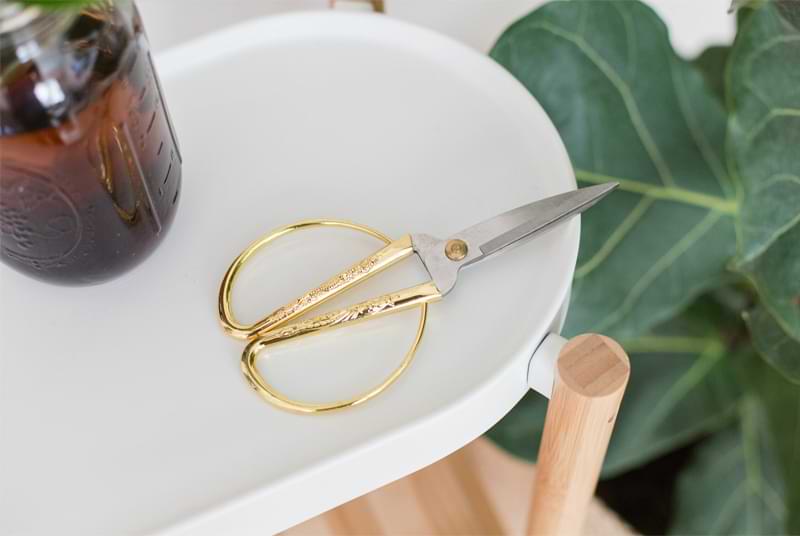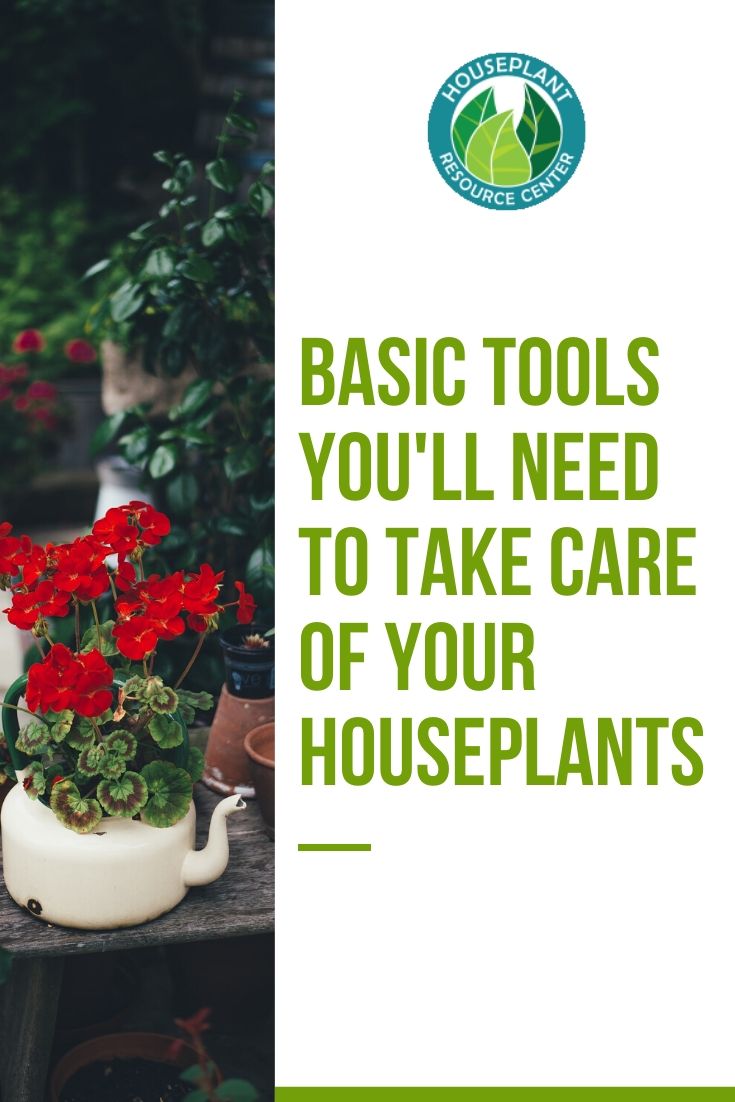Table of Contents
Basic Tools You’ll Need to Get Started
Every houseplant owner needs a few basic houseplant tools in order to take the best possible care of their plants. But what exactly do you need to get started?
Don’t worry, you don’t have to buy out half the gardening section at Lowes to build your indoor gardening toolbox, but there are a few basic things you’ll want to have on hand to help you with basic procedures like watering, repotting, pruning, etc.
Here’s a basic list of what you need, along with some nice-to-have-but-not-100%-necessary tools. (We’re going to skip the obvious things like pots and potting mix, but those are important too!)
Small gardening trowel
A little metal shovel with a pointed end will come in handy when potting and repotting your plant, and a trowel is especially made for scooping up soil and depositing it into a narrow container, like a plant pot. The pointed end also makes it easier to pot small plants without making a huge mess!
It also helps smooth out the top of your soil once you’ve repotted.
If you don’t want to get a trowel, a spoon can work well for scooping soil into tiny pots, and for larger pots, you may be able to pour the potting mix directly from the bag and into the pot without much trouble. A trowel just helps you be more precise and less messy!

Pruning shears
You’ll need a sharp, clean instrument for pruning plants and taking cuttings. It’s important that your tool is sharp because you want to cut the stems cleanly, not crush them and cause irreversible damage.
A pair of pruning shears is made for pruning and taking cuttings, but you can also use a sharp knife or pair of kitchen scissors.
Watering can
Again, you can make do without this, but you’ll want some sort of vessel for watering your plants without spilling everywhere or getting water all over the leaves (this isn’t good for them). A can with a long, narrow spout is ideal for small to medium sized plants because it lets you control exactly where the water goes, which is important when you’re trying to get the water into a small space.
Gardening gloves
You’ll want a pair of gloves that protects your hands from sharp branches and thorns and also protects your hands from potentially irritating sap from your plants, but your gloves shouldn’t inhibit your movement too much. A well-fitted pair of protective gloves from the hardware store works perfectly.
Humidity meter
Both humidity and temperature can work together to harm your plant if they’re too low, so putting this near your plant is a good first step to making sure you’re creating the right environment for your plant to thrive!
Often, people are really wrong about their humidity (for better or for worse), so you have to check to be sure. I was sure my plants were too dry, then I got my humidity meter and realized that my house is always around 55-60% humidity, which is great!
Here’s a good humidity meter that we recommend.
Optional, but Good to Have Around
Humidifier
Many popular houseplants originated in tropical rainforests. In ways, this makes them ideal houseplants because they’re well-adapted to the indirect light conditions you’ll find in most homes.
However, these plants also prefer plenty of humidity, which can be hard to come by in our world of climate control.
If you bring home humidity-loving tropical plants like fiddle leaf figs and other ficus trees, monsteras, money trees, etc, you may want to pick up an inexpensive humidifier to give your planty friend a nice dose of humidity.
Moisture meter
This tool is invaluable for monitoring your plant’s moisture level, especially with plants that are very precise with their watering needs, such as ficus trees. This tool allows you to stick the sensor into the soil and take a reading to tell if your plant needs water or to warn you that you may be overwatering.
Grow lights
If the light in your home is on the dim side but you still want to raise light-loving plants, no problem! You can make the most of the light you have by supplementing with grow lights, which are full-spectrum bulbs you can put into regular light fixtures to give your indoor plants a nice boost.
Here’s one of our favorite bulbs.
As you can see, you don’t need a lot to get started with houseplants! Just a few basic tools plus some specialized ones to make your home conditions more ideal for the plant of your dreams. These tools will take care of 90% of your houseplant needs.




